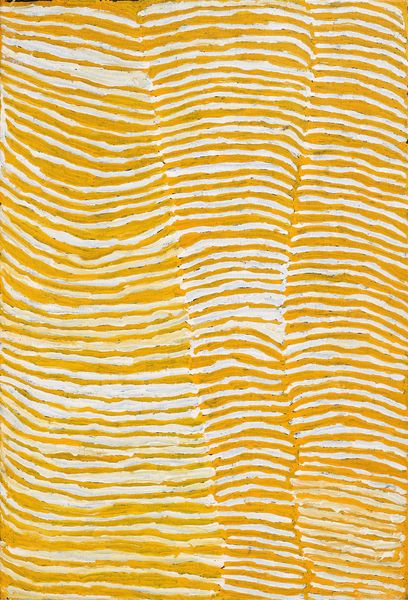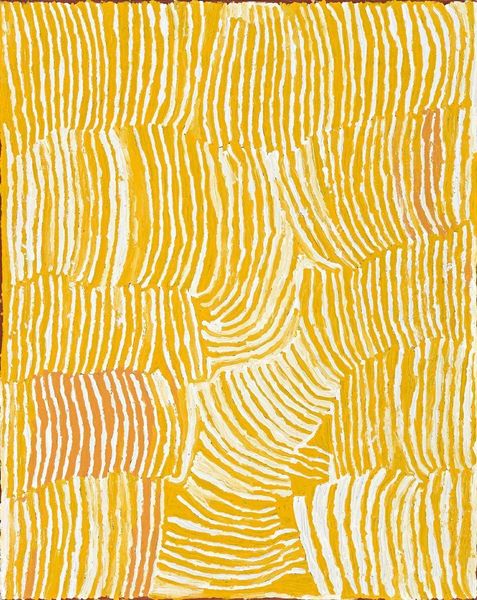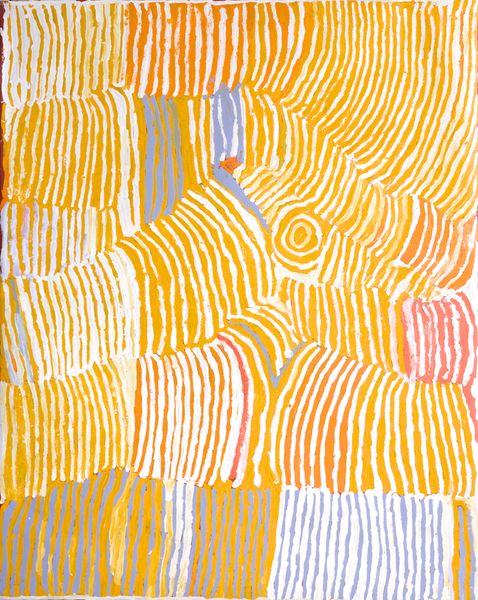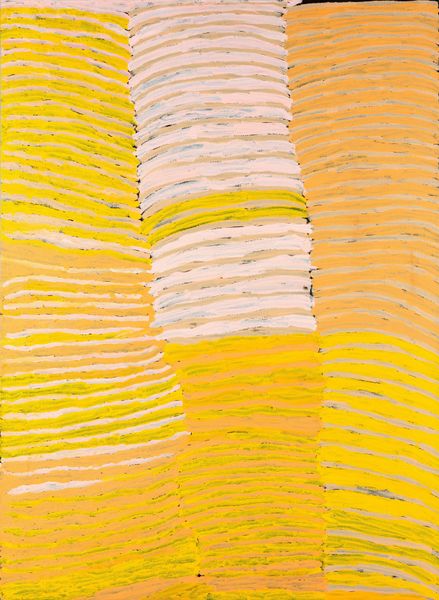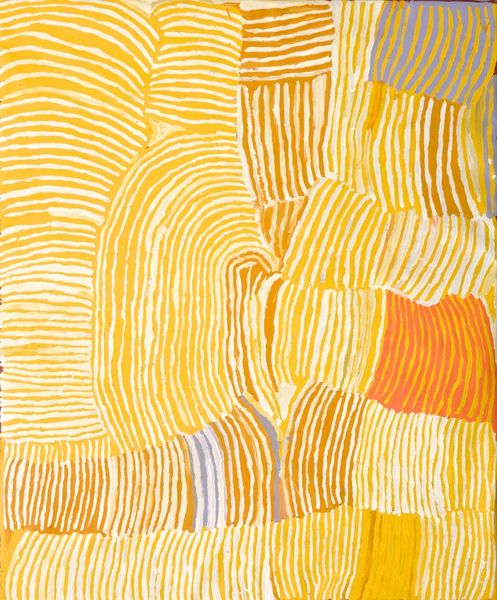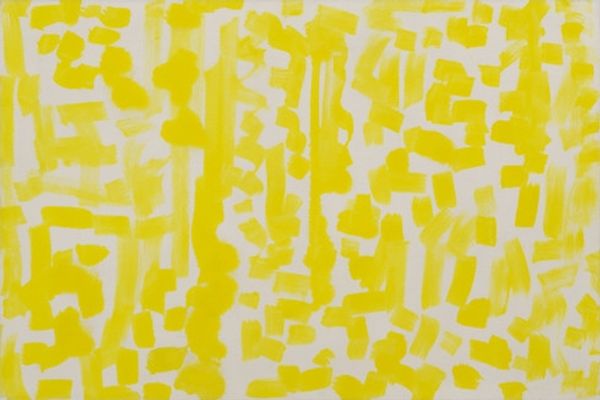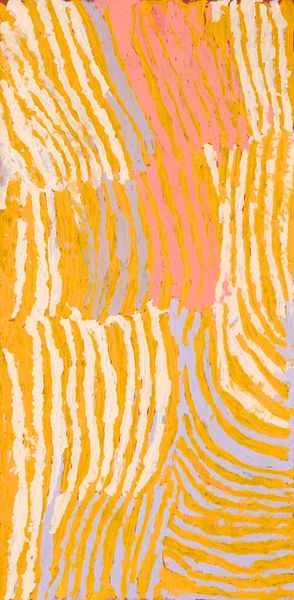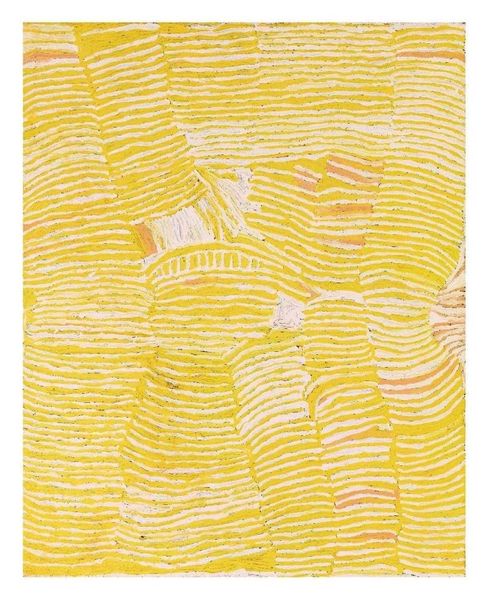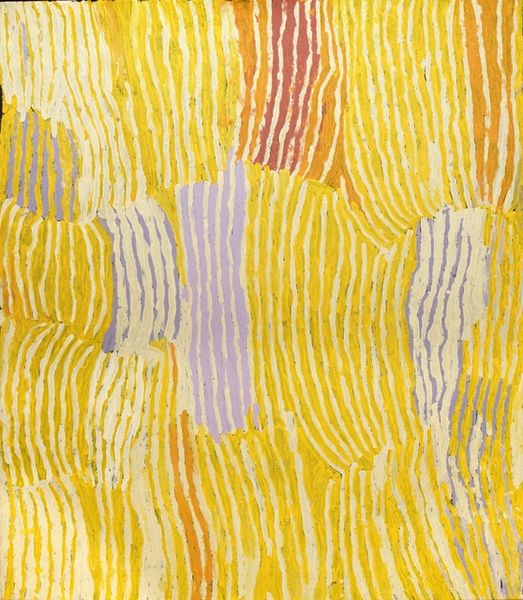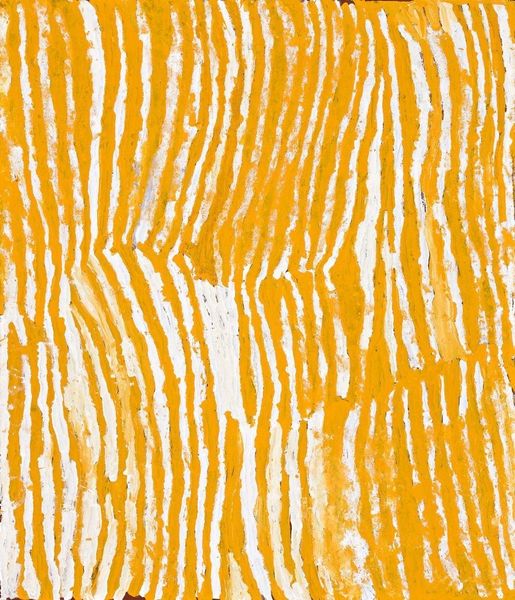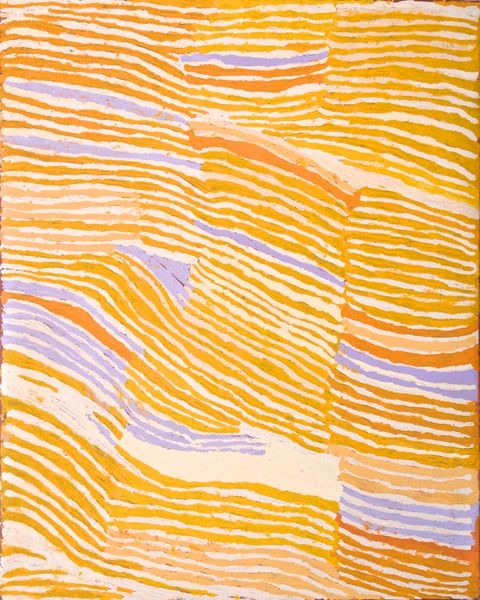
painting, acrylic-paint
#
painting
#
op art
#
acrylic-paint
#
geometric pattern
#
abstract pattern
#
abstraction
#
line
Copyright: Makinti Napanangka,Fair Use
Editor: Here we have "Lupulnga," an acrylic painting created by Makinti Napanangka in 2003. The overall effect is mesmerizing. The yellow and white lines create a strong visual pattern. What’s your take on this piece? Curator: What I see first is the continuation of Indigenous Australian artists engaging with the art world on their own terms. The painting may appear abstract, but it speaks to a deep cultural connection to land and Dreaming stories, even if those specific narratives aren't explicitly shared with a broader audience. Editor: So, you see its abstraction as part of a bigger cultural picture? Curator: Exactly. It raises questions about the art market, doesn't it? Who decides what is considered ‘art’ and how it’s valued? Are we appreciating this solely for its aesthetic qualities, or are we acknowledging the complex cultural context it comes from? How has the market impacted what art is being produced? Editor: That's fascinating. It makes me think about the power dynamics involved in representing other cultures. Curator: Precisely. Museums and galleries play a huge role here, and it's important to be aware of their role in either amplifying or diluting Indigenous voices. Should museums change and reflect these considerations in exhibits? Editor: Absolutely! I didn't initially think about the political aspects, but now I see that the work prompts crucial discussions about representation and cultural exchange. Curator: Indeed, viewing art this way provides a fuller appreciation, and also encourages us to be more conscientious. Editor: I'll definitely be more attentive to these issues in my own research! Thanks.
Comments
No comments
Be the first to comment and join the conversation on the ultimate creative platform.
